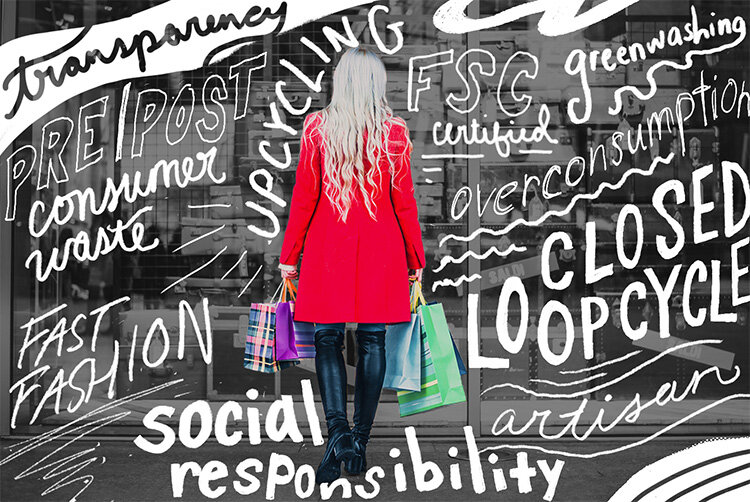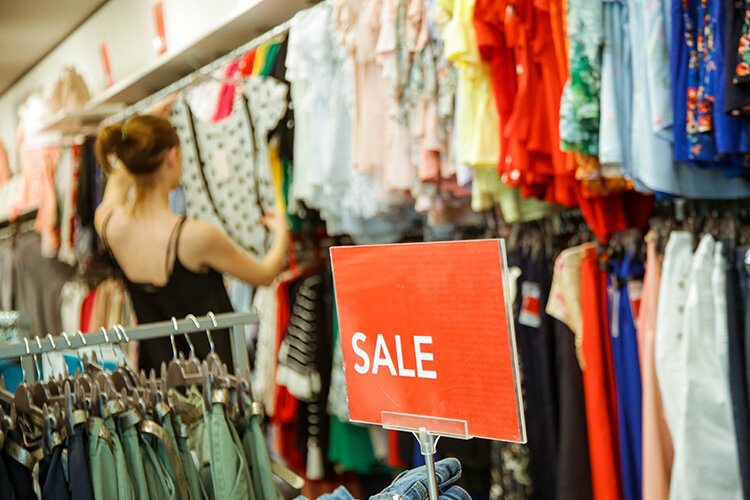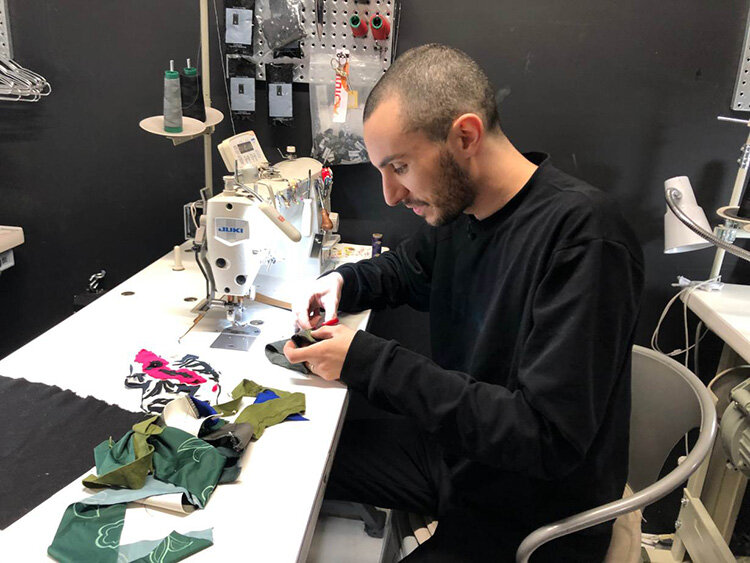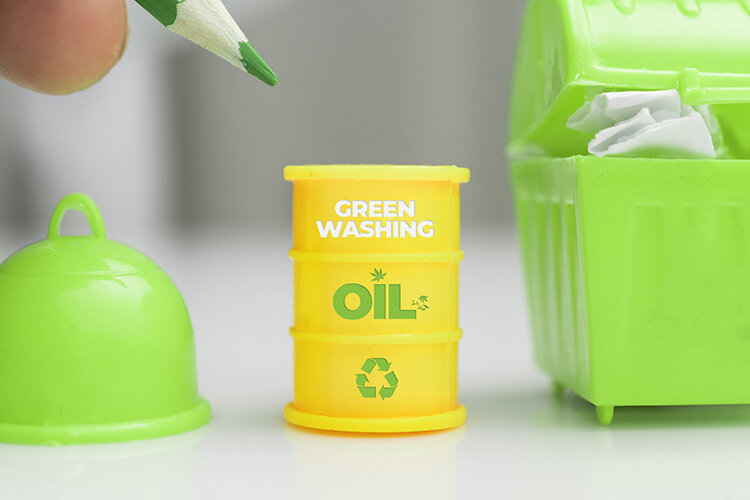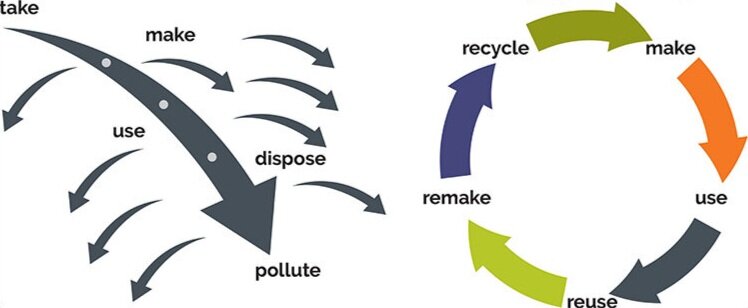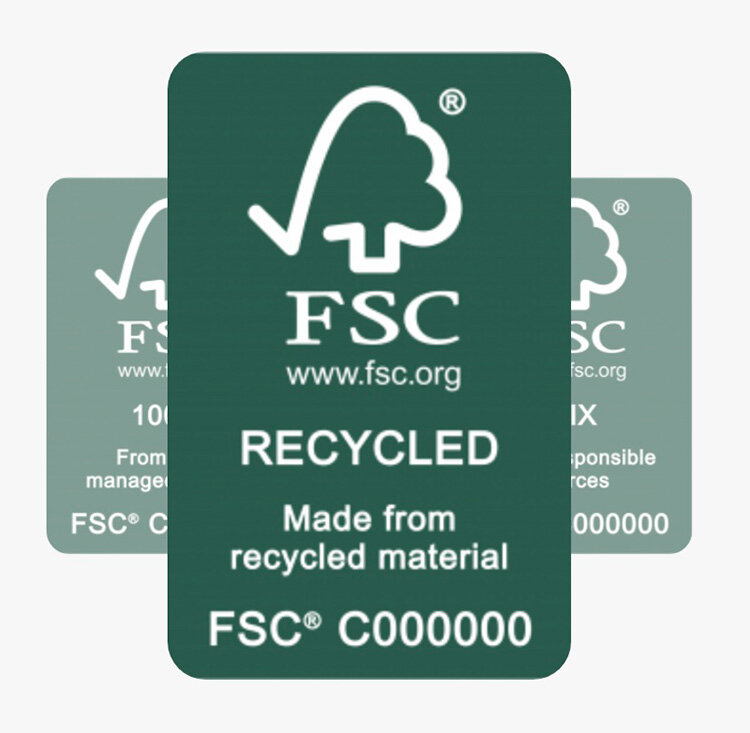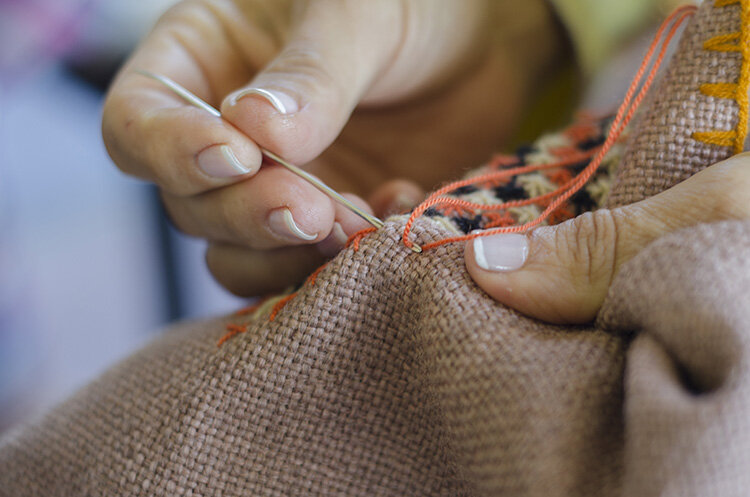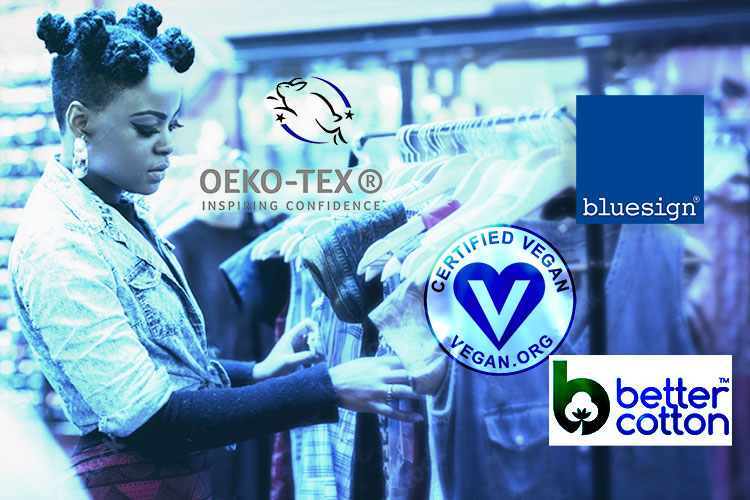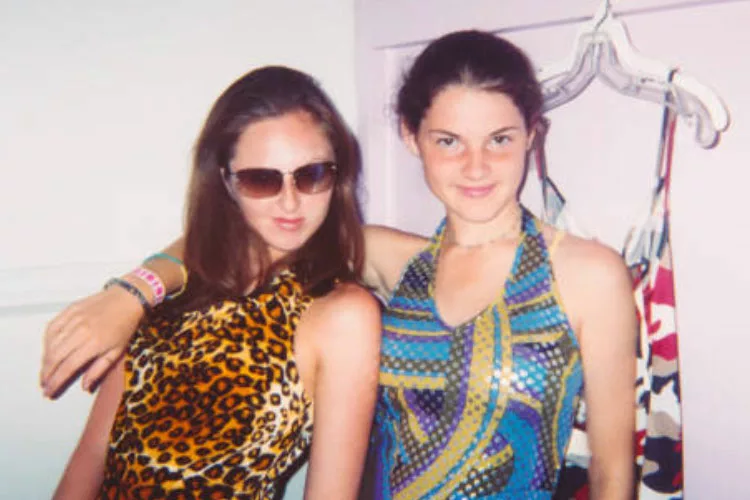Don’t give up on shopping ethically + sustainably. Like 311: We’re here to help! (…but if this is an emergency, call 911 😉 )
Along with environmental awareness, sustainable fashion is growing in popularity around the world. In case you are not totally up-to-date on all of the new lingo (because the terminology can be confusing), No Kill has come up with a list of key terms that are constantly used in discussions of sustainable fashion.
So, following our list of 5 informational books and continuing on our education trend, here is our list of NEED TO KNOW terms in the world of sustainable fashion.
Fast Fashion (the worst kind…)
Fast fashion refers to any clothing mass-produced by larger brands at an accelerated speed. Fast fashion garments are normally more inexpensive because of their unsustainable supply chain and production process.
‘Trendy’ items are a great example of fast fashion: when a certain style or color is ‘in’, fast fashion brands will produce the clothing at lightning speed to meet consumer demand before the trend is over. A lot of these fast fashion items are worn a few times and then discarded, contributing to a large amount of textile waste.
Fast fashion brands are responsible for much of the environmental destruction and human rights violations. You should definitely check out No Kill’s article on our LEAST favorite fast-fashion brands.
Fast fashion should be avoided at all cost – there are SO many more sustainable and ethical brands out there with amazing items that will last longer than any cheaply made fast fashion piece! A great way to check if your favorite brand is sustainable is just a click away, the ‘good on you’ website offers thousands of well-research fashion brand ratings based on their sustainability and ethics.
Overconsumption
Overconsumption refers to a level of superfluous consumption – within the fashion industry this is used to describe consumer habits and the rate at which someone acquires new garments. In general, rates of consumption become superfluous when it surpasses a person’s actual needs while outpacing the regenerative abilities of our environment.
Fashion overconsumption has become extremely problematic since the introduction of fast fashion (defined above). The speedy (and un-ethical) production rates and inexpensive prices of fast fashion allows consumers to purchase and discard garments at record speed, resulting in a shameful amount of waste.
Garments should not be seen as disposable products or bought only for a fashion HAUL. We, as a society, NEED to reflect on our consumer habits and change them!
Zero Waste Daniel making magic with pre-consumer waste
Pre- and Post-Consumer Waste
Pre-consumer waste refers to waste created during the production and manufacturing processes (often fabric scraps). Basically, pre-consumer waste is any waste that is created before the item is purchased. Often this is seen as not worth anything so it goes to the landfill. Some companies have been working on this problem by donating their pre-consumer waste to initiatives that use it for insulation. Many young designers are being trained to make Zero Waste Patterns that essentially work to eliminate this waste. And finally there are designer’s like Zero Waste Daniel who have created a fashion line/business model built on pre-consumer waste!
Post-consumer waste is the waste resulting after an items disposal (often textile waste), although upcycling is always a great option! Next time you shop, remember to consider the pre- and post-consumer waste resulting for the production and purchase of an item, and make sure it is worth it!
Greenwashing
Greenwashing is a form of false advertising that is constantly used by unsustainable fashion brands. It occurs when brands label themselves and their products as environmentally friendly when they REALLY are not. Not only are they profiting off of false advertising and still destroying the environment, but they are belittling the amazing efforts of truly sustainable and ethical brands! This article explains it a bit more but one thing to keep in mind is any sustainable initiative by H&M, ASOS or any other fast fashion label IS greenwashing because even if they have a tiny “sustainable” line they are still major contributors to the fast fashion problem. We like to say it’s like McDonald’s saying they are healthy because they have salads…um, NO!
Transparency
The idea of transparency in the fashion industry refers to a practice implemented by brands where information about the production process, like how, where and by whom an item was made, is openly shared with consumers.
Although transparency does not ensure sustainability, it allows consumers to be more knowledgeable about where their purchases are coming from, which is where social responsibility comes in.
(Corporate) Social Responsibility
Social responsibility has two different dimensions: individual and corporate.
Individual social responsibility is a theory of ethics supporting the idea that everyone has an obligation to act in a way that benefits all of society. It revolves around accountability, whether it means taking public transportation instead of driving or using tote bags for grocery shopping. In the fashion industry, (individual) social responsibility falls on the consumers; it is all about shopping from ethical and sustainable brands.
Corporate social responsibility is a similar concept but, as the name suggests, it applies to businesses and corporations. The implementation of corporate social responsibility aims to improve business practices and policies so that they can have a more positive influence on all of society and our environment, prioritizing equality, ethics and sustainability.
The sustainable fashion industry is full of brands practicing corporate social responsibility. Any brand that chooses ethical working conditions and eco-friendly materials (both of which are often more expensive) over the practices used in fast fashion is immeasurably more socially responsible and accountable that other fashion brands.
Bethany Williams is a designer who uses upcycling in her work.
Upcycling
Upcycling is all about re-using and re-purposing old items to make something brand new and even better. Not only does it trigger creativity, but it also reduces waste and uses less energy than recycling!
Upcycling helps to support the development of a circular economy where materials can be continuously re-used and re-purposed. Many brands have begun to implement the upcycling process in their new designs, and it is definitely gaining momentum in the fashion world.
Closed-Loop Cycle
A closed-loop cycle in fashion encourages recycling and/or upcycling old garments in order to create new ones and greatly eliminates waste. In a closed-loop cycle, garments no longer in use are broken down and turned into the fabric needed to create a new item. This process forms a ‘closed-loop’ so that items have an eternal lifecycle. And it’s opposite of the traditional TAKE >> USE>> TOSS IN THE TRASH>>POLLUTE OUR WORLD that normally happens…
FSC-certified
A Forest Stewardship Council (FSC) certification ensures that items come from well-managed forests that provide environmental, social and economic benefits for society. The FSC has the highest social and environmental standards and the requirements for the FSC certification are extremely strict. The FSC certification provides credible evidence that a company or fashion brand resources their materials in a way that will not have a negative impact on the environment.
Several eco-friendly fashion brands are beginning to use forest-based fabric for their garments. If a brand is FSC-certified, it is using fabric made of tree fibers harvested from sustainable sources! Stella McCartney, often referred to as the queen of sustainable fashion, and her brand are FSC-certified, as well as other eco-friendly fashion brands.
Next time you’re shopping, make sure to look out for the FSC label!
Artisan
An artisan is a skilled craft worker who creates items partially or even entirely by hand. Supporting artisans is so important, especially within the confines of the fashion industry. Because they are made by hand, every artisanal item is unique, and the production process is not nearly as destructive to the environment. Supporting artisans means supporting their traditional and artisanal expertise, skills and processes to preserve their cultural heritage and develop social sustainability. It also means paying them fairly and acknowledging them as contributors to the work and not appropriating their designs or heritage.
Not only are these definitions helpful in day-to-day conversation, but they can also serve as good tips to consider on your next shopping trip. We encourage you to keep these key sustainable fashion terms in mind and use them to shape your perspective, values and consumer habits!
–Carolina McCormick
Related Articles
In conversation with fashion activist Elizabeth Cline
Orsola De Castro of Fashion Revolution Interview
10 Sustainable Fashion Terms to Know
Read: How to Save Our Planet. Watch: Fashionscapes
Sustainable Fashion Organizations and Forums You Need to Know About

